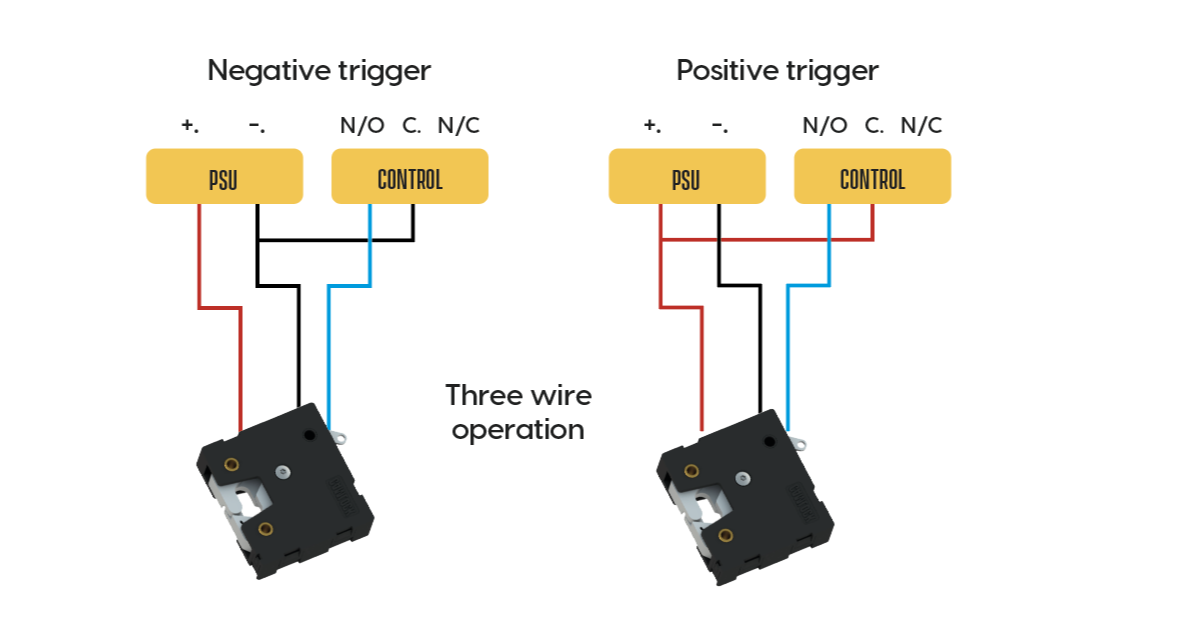Two-wire and three-wire locks
Why do we have two versions of wiring and what are the fundamental differences between the two?
Two-wire and three-wire electronic locks are two different types of locks used for various security applications. The primary difference between them lies in their wiring and functionality.
Both versions have unique characteristics that define why they are used.
Two-wire:
The two-wire version was the first configuration to be developed in the Series 100 lock. The primary reason for this was that it could be used as a direct replacement for solenoid operated locks.
Additionally, a two-wire version is ideally suited for use when the lock is being powered by batteries, this is because the lock will only use power when being operated, conserving energy by avoiding the locks being powered continuously.
- Two-wire electronic locks, are simpler in terms of wiring and functionality.
- Two-wire electronic locks typically require only two wires to operate: one for power and one for ground (or common).
The two-wire version can be connected in two different ways.
Power can be applied constantly to the positive wire (red) and then a circuit can be made by controlling the negative wire (black). Alternatively, connection can be made with the negative wire (black) and then the circuit can be completed by applying the positive wire (red).

The main use of two-wire operated locks is when they are being powered by batteries or need to be legacy compatible.
Our locks that are available in two-wire configuration: - S100, S500 and S600.
Three wire:
The three-wire version has two different versions (positive trigger and negative trigger).
The main difference between the three-wire over the two-wire is that the three-wire has power connected to the lock constantly. By connecting the lock this way we enable more options to control the lock.
- Three-wire electronic locks are more versatile than two-wire locks.
- They require three wires for operation: one for power, one for ground, and one for control.
With three-wire we can choose to hold the lock in an open (unlocked) position for prolonged periods or keep the lock in an unlocked state, for example: - if the door is in the open position, this is a feature that is particularly attractive to the parcel locker sector as it allows packages to be added and removed without the lock closing. This function is achieved by maintaining the connection to the trigger wire (Blue).


In summary, the key difference between two-wire and three-wire electronic locks is their level of complexity and functionality. Two-wire locks are simpler and typically used in basic security applications, while three-wire locks offer more advanced features. The choice between them depends on the specific configuration of existing equipment and the complexity of the overall security system.
| N/O | Normally Open |
| C | Control |
| N/C | Normally Closed |
| + | Positive |
| - | Negative |